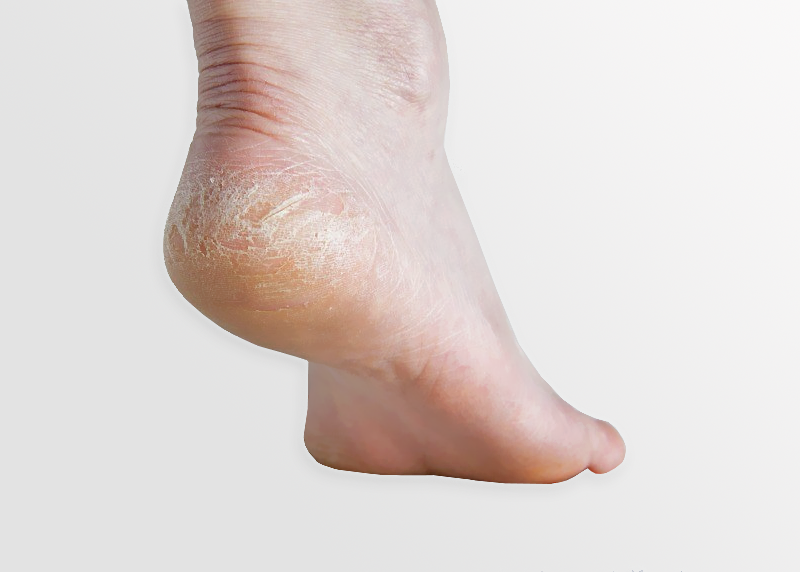Prevent & Manage Dry Cracked Heels
How to Manage Dry, Cracked Heels
It is common to get dry skin on the heel that cracks, especially in the winter. Colder weather causes the skin to dry out. And the heels are especially vulnerable. However, there are self-care steps to try that manage and prevent dry, cracked heels. When you see skin split on heels, it is safe to remove. Just be sure that you do so gently.
When the skin around your heel is dry, it cracks. It becomes thicker as it gets drier. Pressure from stepping down causes the skin to split. There are a few known factors that increase the risk of dry heels.
- Wearing open footwear like sandals
- Having cold skin
- Obesity
What Causes Cracked Heels?
Shoes that are too small can cause friction against the heel. This can make dry, cracked heels much worse. Always wear supportive, properly fitted shoes. Losing weight will reduce pressure on your feet. This can alleviate symptoms and the risk of splitting skin.
The weather is the most common factor that influences dryness. Humidity is low during colder months. And, drier air means drier skin. So, combined with colder temperatures, the skin is vulnerable. The warmth inside your house also plays a role. Indoor heating also reduces humidity and causes dryness. This is true for fireplaces, central heating, and stoves.
A hot shower or bath is a favorite pastime in the winter. However, hot water dries the skin too. You can minimize the effects of hot water, though. Be sure to moisturize within ten minutes of getting out to prevent dry, cracked heels.
Watch what type of soaps you use. Harsh detergents and soaps dry out the skin. The chemicals damage the natural skin barrier. As a result, water is lost from the skin, and cracked heels develop. Additionally, already dry skin can get worse after using these harsh soaps.
Skin conditions like eczema and psoriasis cause dry heels. Women are more prone to this, especially after menopause. Acquired keratoderma is a disorder that can develop in women. It can lead to cracked skin on the heels and body. Topical estrogen treatments are the only solution to heal dry skin.
Treatment for Your Dry Skin
Take warm baths or showers instead of hot ones. This reduces dryness. Also, use a gentle soap on your feet. Furthermore, by soaking your feet, you can prevent heel cracking. Use soapy water for about twenty minutes. Gently pat your feet dry and apply moisturizer right away. Using a foot scrubber, you can gently remove dead skin. Make sure you properly clean the scrubber between uses.
Additionally, combating dry skin and cracked heels depends on moisturizers. These provide a protective seal to prevent water loss. Retaining water keeps the skin from drying out. To treat dry, cracked heels, look for products that contain any of the following :
- Petroleum Jelly
- Glycerin
- Lactic Acid
- Lanolin
- Ceramides
- Salicylic Acid
- Alpha Hydroxy Acid
Moisturize your skin as often as possible. Ideally, you want to do this before bed. Put socks on afterward to really lock in moisture.
You may need to see your doctor if dryness does not improve. Also, if your heels become swollen or inflamed. A dermatologist specializes in skincare and can provide treatment. You may need prescription ointments or steroid creams. Sometimes special bandages are required or tissue glue to prevent split skin. Holding skin together helps your heels to heal.
In some cases, cracked heels are a sign of a severe condition. Diabetes is a common cause of dry heels. Loss of nerve function can also cause this. So, if you have severe dryness, talk with your doctor. With treatment, you can prevent further dryness and split heel skin.
If you feel your dry feet are becoming worse or impossible to manage, call us at 888-409-8006. Our award-winning podiatrist is here to help with any foot needs!

